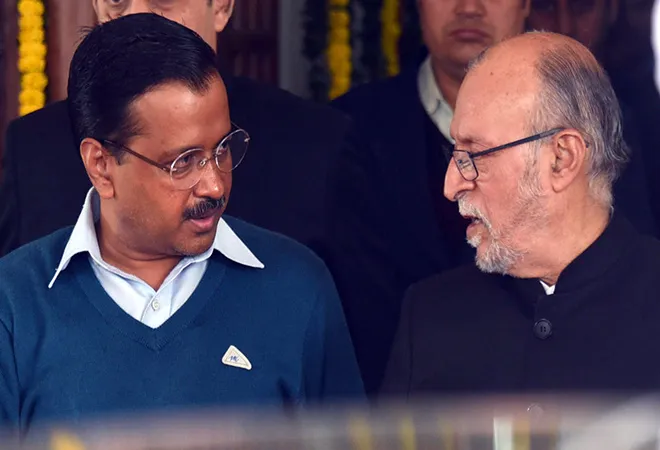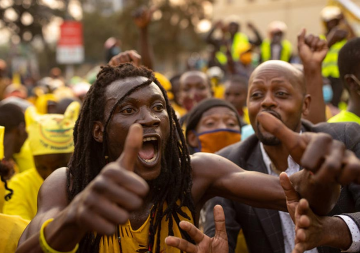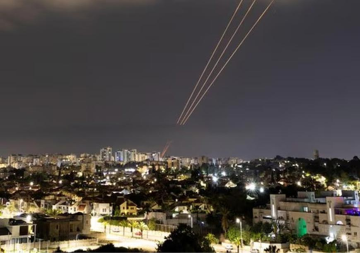
In March 2021, both the Lok Sabha and the Rajya Sabha passed the Government of National Capital Territory of Delhi (Amendment) Bill, 2021 (NCTD). The changes sought to be introduced by the Bill in the governance of Delhi were bitterly opposed by the Aam Aadmi Party (AAP) that partly governs Delhi. Nine other opposition parties in the Lok Sabha and 12 in the Rajya Sabha also stood together to disapprove of the Bill. The Delhi Chief Minister considered the changes as seeking “to drastically curtail” powers of the elected government. “What is the point of elections if you are making the LG the leader?” the Congress argued, while demanding that the Bill be sent to a select committee. In a press conference on 25 March, the Deputy CM of Delhi charged that the central government has taken recourse to this Bill on account of its double failure to displace AAP through popular vote. In the debates that took place in both Houses of Parliament prior to the passage of the Bill, opposition members criticised the impending legislation for its attack on the fundamentals of federalism, denial of the principles of democracy, and a flagrant violation of the Constitution.
Despite the almost unanimous dissent of the opposition, the Bill passed muster in the two Houses and the President of India went ahead with his assent to the same on 28 March 2021. Given the huge disappointment and angst the Bill has generated in the opposition ranks, it is quite certain that the legislation will get challenged in the Supreme Court.
There are primarily three salient provisions of the amendment Act that have riled the opposition. Firstly, the legislation in Section 2(3) states that the expression “government” referred to in any law to be made by the Legislative Assembly shall mean the Lieutenant Governor (LG). This, the critics say, deals a body blow to the popularly elected state government of Delhi. Secondly, the Act mandates in Section 4 (b) that the Legislative Assembly shall not make any rule to enable itself or its committees to consider the matters of day-to-day administration of the Capital or conduct inquiries in relation to administrative decisions. This provision has been attacked on the ground that it would virtually put paid to the proceedings of multiple committees that the state government has constituted to examine matters ranging from riots to environment. Thirdly, Section 5 states that before taking any executive action in pursuance of the decision of the Council of Ministers or a Minister, opinion of Lieutenant Governor “in terms of proviso to clause (4) of Article 239AA of the Constitution shall be obtained on all such matters as may be specified, by a general or special order, by Lieutenant Governor." This, the critics point out, will force the elected government to take the LG’s advice before taking any action on any cabinet decision. It tilts the balance further in favour of the LG, since the LG himself would have the sole discretion to decide what these matters would be.
In essence, the Bill emaciates the state government’s autonomy and puts the march of the state towards full statehood in reverse gear. It, thereby, moves against decentralisation of power by concentrating power through the LG in the hands of the Government of India. It cannot be denied that there is a fair measure of truth in what the critics have pointed out. Out of the Bill, the LG emerges stronger and the popular government weaker. The dream of Delhi’s full statehood relentlessly fought for by Delhi’s leaders of all parties for decades lies shattered.
There is one aspect of the entire debate, however, that sems to have been completely ignored by critics of the legislation. They have not cared to see this entire legislative intervention of GoI in the context of Delhi being the national capital of India. Right at the beginning, after India’s independence, the drafting committee of the Indian Constitution was convinced that the national capital cannot be under the administration of any power other than the Government of India. Dr. Ambedkar and Pandit Nehru were the central figures in that drafting committee and emphatically held this same view about the undiluted grip of the central government over the capital. Delhi was, therefore, classified as a “C State” (Union Territory). For a brief interlude, during the early 1950s, Delhi did get a Chief Minister, a Council of Ministers and a legislative assembly. However, the very first Chief Minister of Delhi, after a running feud with the Union Home Minister over issues of jurisdiction and autonomy resigned, leading to the abolition of the legislative assembly of Delhi soon after. Braving all criticism, GoI proceeded in 1957 to have the Delhi Municipal Corporation Act enacted. This provided Delhi with a municipal corporation elected on the basis of universal adult franchise. This situation continued till the end of 1980s. For all those years, Delhi continued to be a Union Territory under the complete control of GoI.
However, following decades of local advocacy for Delhi to acquire the status of a state, Delhi was grudgingly allowed its ‘statehood’ early in the 1990s, with a Chief Minister and a popularly elected unicameral legislature. This exceptional concession to a very large city was not on account of a nationally agreed policy that very large cities (those with a population of say, 10 million or more) would be declared states. It was the consequence of Delhi’s local political leadership seeking higher office than what a municipal corporation allowed. Even so, the ‘state’ remained curtailed in its powers. Police, public order, and land continued at all times to remain with Government of India. It remained in substance, therefore, a union territory and in form a state, with the Lt. Governor retained as its chief executive.
In the Indian context, right from the 1990s, the issue of Delhi being a truncated state and the demand for full statehood has never seized to be a bone of contention between the state government and GoI, irrespective of which political party has been in power at the Centre. There has scarcely been a Chief Minister in Delhi who has not had run-ins with the LG. This clearly demonstrates that the arrangement arrived at in regard to Delhi’s statehood is highly unsatisfactory. The NCTD Act 2021 has attempted to undo some of the weaknesses that had crept into the governance architecture of Delhi, but did not go the full distance and left the ‘rump state’ breathing.
Henceforth, probably more than in the past, Delhi will continue to witness ugly scenes between the CM and the LG, and publicly aired differences between the State and the Centre. The open display of differences, allegations, and counter allegations are not going to create a good global image about the governance model in the capital and will reflect poorly on the entire nation. The experience of the past several decades should have convinced decision-makers in GoI that the system being erected by the NCTD Bill will not work. What ought to have been obvious is that megacities of the country, irrespective of their size, should practice and experience their democracy in the urban local bodies. What is true of all very large cities in India should also have been true in Delhi, more so because it is the national capital. By allowing a curtailed state to exist in Delhi, Government of India seems to have arranged for an ongoing verbal sabre rattling in Delhi and similar demands in the future by local leaders in other emerging megacities of India.
The views expressed above belong to the author(s). ORF research and analyses now available on Telegram! Click here to access our curated content — blogs, longforms and interviews.




 PREV
PREV


